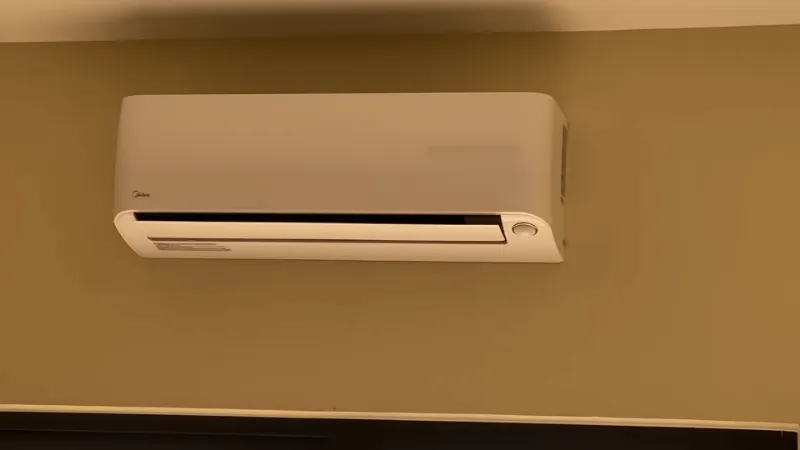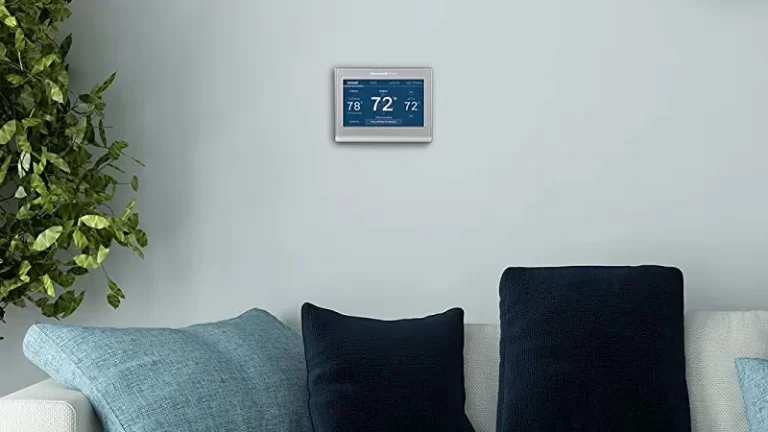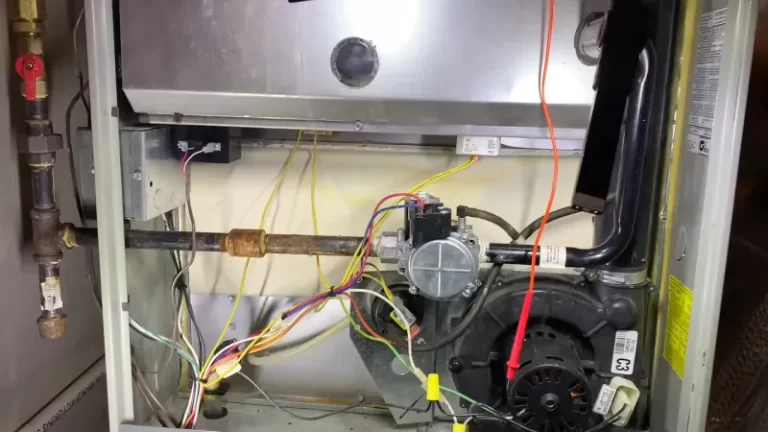Air Conditioner Refrigerant Line Vibration [Symptoms, Causes, Fixes]

Air conditioning units rely on refrigerant lines to transfer the refrigerant, which cools the air in the unit, throughout the system. It is important to maintain the proper refrigerant charge in the system to ensure that the unit is functioning properly and efficiently.
Vibration in the refrigerant lines can be a sign of an issue with the unit, such as an undercharged system or loose components. It is important to address any issues with the refrigerant lines promptly to prevent further damage to the unit and ensure that it is operating effectively.
You'll Learn About
Air Conditioner Refrigerant Line Vibration
Air conditioning unit is experiencing a couple of different issues. The first issue with the humming and rattling noise could potentially be caused by a loose component within the unit, such as a loose fan blade or compressor.
It’s also possible that the issue could be caused by the unit being installed on an uneven surface, which can cause vibration. To troubleshoot this issue, you can try tightening any loose bolts and components, and check to make sure the unit is level.
If the issue persists, it may be necessary to have a professional technician examine the unit to identify the cause of the noise.
The second issue with the vibrating pipes may be caused by the unit being undercharged, which can cause the refrigerant lines to vibrate. Unistrut can be used to help isolate the pipes and reduce the vibration.
You can also try using cushion clamps, which have rubber inserts to help cushion the pipes and reduce the vibration. If the issue persists, it may be necessary to have a professional technician examine the unit and check the refrigerant charge to ensure that it is at the proper level.
Causes of Refrigerant Line Vibration
There are several potential causes of vibration in refrigerant lines in air conditioning units. One common cause is an undercharged unit, which can cause the refrigerant lines to vibrate as the pressure in the system is not properly balanced.
This can also lead to decreased efficiency and performance of the unit. Another cause of refrigerant line vibration is loose or faulty components within the unit, such as a loose compressor or fan blade.
These components can cause vibrations as they move within the unit. An unbalanced system can also cause vibrations in the refrigerant lines, which can be caused by uneven distribution of the refrigerant or imbalanced airflow.
Identifying and addressing the root cause of the vibration is important to prevent further damage to the unit and ensure that it is operating effectively.
Symptoms of Refrigerant Line Vibration
There are several symptoms that may indicate that your air conditioning unit is experiencing vibration in the refrigerant lines. One of the most obvious symptoms is loud noises coming from the unit, which can be caused by the vibrations in the lines.
You may also be able to feel vibrations in the lines or in surrounding structures, such as walls or floors. Additionally, if your unit is experiencing vibration in the refrigerant lines, you may notice a decrease in efficiency and performance.
The unit may not be able to cool your home as effectively or may take longer to reach the desired temperature. It is important to address any symptoms of refrigerant line vibration promptly to prevent further damage to the unit and ensure that it is operating effectively.
Solutions for Reducing Refrigerant Line Vibration
If your air conditioning unit is experiencing vibration in the refrigerant lines, there are several steps you can take to try to reduce the vibration. One solution is to check and adjust the refrigerant charge in the unit to ensure that it is at the proper level.
An undercharged unit can cause the refrigerant lines to vibrate, so making sure that the charge is correct can help reduce the vibration. Another solution is to tighten any loose components within the unit, such as the compressor or fan blades, which can cause vibrations as they move.
Balancing the system can also help reduce vibrations in the refrigerant lines. This can be done by evenly distributing the refrigerant and ensuring that the airflow through the unit is balanced. Finally, using vibration-reducing hardware such as Unistrut or cushion clamps can help isolate the refrigerant lines and reduce the vibration.
These solutions can help reduce the vibration in the refrigerant lines and improve the overall performance and efficiency of the unit.
Step-by-Step Guide to Fix Vibration:
Tools Needed:
- Screwdriver
- Pliers
- Cushion clamps
- Unistrut
- Level
Step 1: Locate the Source of the Vibration
Start by locating the source of the vibration. This can be done by listening carefully for the source of the noise and observing the movement of the pipes.
Step 2: Check the Refrigerant Charge
Using a screwdriver and pliers, remove the access panel of the air conditioning unit to access the refrigerant lines. Check the refrigerant charge to ensure that it is at the proper level.
Step 3: Isolate the Pipes With Unistrut or Cushion Clamps
If the refrigerant charge is at the proper level, use Unistrut or cushion clamps to isolate the pipes and reduce the vibration.
Step 4: Check the Level of the Unit
Using a level, check the level of the air conditioning unit to ensure that it is installed on a level surface.
Step 5: Tighten Any Loose Bolts or Components
Using a screwdriver and pliers, tighten any loose bolts or components that may be causing the vibration.
Step 6: Clean the Pipes
Using a soft cloth or brush, clean the inside of the pipes to remove any debris or dirt that may be contributing to the vibration.
Step 7: Reinstall the Access Panel
Using a screwdriver and pliers, reinstall the access panel of the air conditioning unit.
Step 8: Test the Unit
Turn on the air conditioning unit and test it to ensure that the vibration has been resolved.
By following these steps, you should be able to effectively resolve vibration issues in air conditioning pipes. If the issue persists, it may be necessary to have a professional technician examine the unit to identify and repair any underlying issues.
Importance of Professional Maintenance
Proper maintenance is important to ensure that your air conditioning unit is functioning effectively and efficiently. Regular maintenance can help prevent issues with the refrigerant lines and other components of the unit, which can save you time and money in the long run.
Professional technicians are trained to identify and fix problems with the refrigerant lines and other components of the unit, and can help ensure that your unit is operating at its best. Scheduling regular maintenance with a professional technician can help prolong the life of your unit and save you money on costly repairs.
In addition, if you are experiencing issues with the refrigerant lines or any other components of your unit, it is important to have a professional technician examine the unit to properly diagnose and fix the problem.
What is Meant by the Vibration of Air Conditioning Pipes?
Vibration of air conditioning pipes refers to the movement or shaking of the pipes that are part of an air conditioning unit. This can cause noise and discomfort, and can potentially cause damage to the pipes and other components of the unit.
What Are Some Common Causes of Vibration in Air Conditioning Pipes?
There are several common causes of vibration in air conditioning pipes, including poor installation, incorrect refrigerant charge, and the buildup of debris or dirt inside the pipes. Additionally, vibration can be caused by issues with the compressor or other components of the air conditioning unit.
How Does Vibration in Air Conditioning Pipes Impact the Performance of the Unit?
Vibration in air conditioning pipes can have a significant impact on the performance of the unit. It can cause noise and discomfort, and can potentially cause damage to the pipes and other components of the unit. Additionally, vibration can decrease the efficiency of the air conditioning unit, leading to higher energy bills and increased wear and tear on the unit.
What Are Some Common Symptoms of Vibration in Air Conditioning Pipes?
Common symptoms of vibration in air conditioning pipes include noise, discomfort, and damage to the pipes and other components of the unit. Additionally, vibration can cause the unit to become less efficient, leading to higher energy bills and increased wear and tear on the unit. Some air conditioners emit carbon monoxide.
What Should You Do if You Suspect That Your Air Conditioning Pipes Are Vibrating?
If you suspect that your air conditioning pipes are vibrating, it is important to have the unit inspected by a professional technician. The technician will be able to identify the cause of the vibration and recommend the appropriate course of action to resolve the issue. In some cases, the vibration may be caused by a simple issue that can be easily fixed, while in other cases it may be necessary to replace or repair components of the unit to resolve the issue.
Conclusion
Vibration in the refrigerant lines of an air conditioning unit can be a sign of a larger issue with the unit. Proper maintenance and timely repairs can help prevent issues with the refrigerant lines and ensure that the unit is operating efficiently.
It is important to address any symptoms of refrigerant line vibration promptly to prevent further damage to the unit and ensure that it is functioning effectively. Scheduling regular maintenance with a professional technician can help prolong the life of your unit and save you money on costly repairs.
By taking care of your air conditioning unit and addressing any issues promptly, you can help ensure that it is operating at its best and providing you with efficient, reliable cooling.




